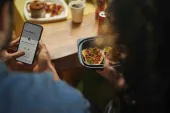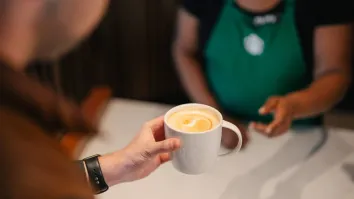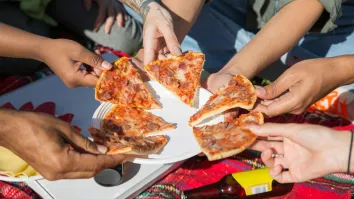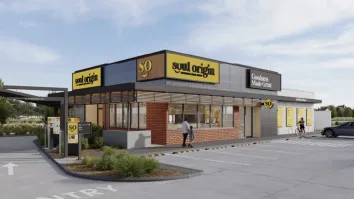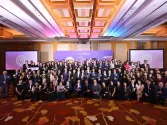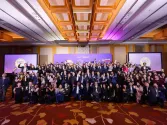A case for making your own app
It’s no secret that the mobile phone is one of the definitive technologies of this generation, which has made its offspring, the mobile application or simply mobile app, increasingly quintessential in the arsenal of QSR digital order marketing.
In Australia, around 20% of all digital orders are placed through the restaurants' own mobile apps, according to The NPD Group. While this is about half of the 41% of all digital orders placed through the restaurants' own websites, it shows that mobile apps have carved out a fervent customer base – and further usage growth is imminent, if industry insiders are to be believed.
“If you look at mobile down here, Internet is plodding along, it’s the cash cow right now. But mobile app has basically doubled in one year in terms of its value in the industry,” says Ciara Clancy, director Australian foodservice at The NPD Group and moderator of the Oracle Hospitality Roundtables on the digital transformation happening in foodservice held in Sydney and Melbourne.
Committed to initiating senior-level dialogue and engagement through these forums, Oracle gathered representatives from popular QSR chains, including Porchetta, Lennard’s Chicken, Nando’s, Grill’d Healthy Burgers, Town & Country Pizza, Ferguson Plarre Bakehouses, Bubba Pizza, PappaRich, PCG Consultancy, The Sporting Globe, Caltex / Nashi, Fonda, Lord of the Fries, and Love Pollo.
Digital ordering boom
The increasing popularity of mobile apps to order from QSRs has contributed to the soaring number of digital foodservice visits in the past half-decade. Digital ordering posted 21% compound annual growth rate (CAGR) from 2011 to 2016 while non-digital ordering has seemingly plateau at 1% CAGR over the same period, based on The NPD Group data. Digital visits numbered 116,000 in 2016, more than tripling from 37,000 in 2010.
In the US, roughly 10% of all restaurant visits are influenced by a website or app, with the growth trend going upwards as older generations become more adept in using mobile apps.
“The use of certain digital tools may be in the early stages among mainstream customers," says Clancy. "Restaurant guests are craving the speed and convenience technology can bring, and the customised experience they can gain.”
Still, it will likely take many more years before mobile apps can hope to unseat Internet-based ordering -- done thru desktops, laptops or iPads – in terms of value and visits. Not all QSR brands also have the means to launch mobile apps, which means Internet ordering channels are currently more accessible.
“Three-fourths of consumption or ordering is still going through the website, and I would say that’s more a reflection of what’s out there in the market,” says Clancy. “When you think about the fact that a lot of this is taking place at home, they probably have their computer in front of them and their iPads are closer by, and they’re probably in foremost where your iPads are probably your first touch points as opposed to your mobile phones potentially.”
Superior customer experience
But Clancy insists that the tide is going to swing in favour of mobile apps soon due to the superior customer experience they provide when ordering food.
Aside from the rising value generated from mobile apps mainly through increased digital orders. customer satisfaction on using mobile apps is a cut above other options. Mobile apps are simply easier to use, especially for the technologically savvy Millennials and Generation Z who know how to work their way around sleek mobile phone interfaces.
The NPD Group survey reveals consumers are more satisfied with their restaurant visit when they utilise a mobile app for ordering than Internet and traditional ordering methods. Around 32% of those who made a mobile app digital order reported the overall experience as "Excellent" compared to only 22% for Internet digital order.
“It’s not just the behaviour is geared toward mobile – and that’s where the momentum is – but people are happier, and their satisfaction rate is better thru mobile than it does non-digital, thru website, thru your iPads your desktops, whatever” says Clancy. “People ultimately have a better experience on mobile apps than they do everything else.”
Grahame Tate, vice president hotels and F&B, JAPAC Oracle Hospitality says that point-of-sale (POS) solutions are playing a bigger role in the mobile app’s rising popularity. These days, QSRs can work with solutions providers like Oracle Hospitality to ensure that all ordering channels, including mobile apps, are integrated into a centralised POS system. This means mobile apps are starting to shed their reputation as experimental platforms that are wonky and have limited features.
“Integration is key,” says Tate. “Integration needs to be seamless and completely invisible to the customer. Customer experience should be the same no matter which channel they order through.”
Why websites are losing
Part of the reason why websites seem relatively clunkier to use than mobile apps is that many were created to convey information first and to handle digital ordering almost like a rushed afterthought as the demand rose in recent years.
“When you look at a lot of websites, the user experience is probably still missing a few things there and I think a lot of websites have been retrofitted to deal with digital ordering. Whereas mobile apps were developed for the specific purpose of being able to order from or able to use in a convenient way,” says Clancy.
“There are a lot of websites -- and I won’t mention those brands – where you have to put in ten pieces of information before they even let you pick up or deliver pizza. By the time it gets there, you’ve gone to bed and gone to sleep, so good luck with that. And that’s why your satisfaction is not going to do well,” she adds.
“Ultimately the momentum is on mobile and satisfaction is much better.”
Looking into the future, the mobile app experience can be further enhanced by the use of voice activation and recognition, according to Oracle Hospitality’s Restaurant 2025 report that outlines the current status and forecast use of disruptive technologies based on a survey of 250 restaurant operators.
In 2014, Domino’s Pizza announced it was the first in traditional and e-commerce retail to launch an intuitive ordering method through the virtual assistant named Dom, which could take orders through simple conversation.
“Adding the simplicity and convenience of voice activation was essential for Domino’s, which relies on mobile and online ordering for approximately 40% of U.S. sales,” said the report.
“People who order digitally also tend to spend more and return with greater frequency because they like the convenience,” said CEO Patrick Doyle at the launch of Dom.
Voice activation can be expanded to also include consumer payment, with several restaurants reportedly testing a Google-supported system that incorporates voice and face recognition. When diners would say “I’ll pay with Google,” this triggers an identification process that checks who the consumer is and then proceeds to charge that consumer’s account.
“In reality, the applications of voice activation know no bounds; virtually anything that can be turned on or off could be voice activated,” the Restaurant 2025 report said. “And with the infusion of artificial intelligence, voice-recognition technology could reflect human-like learning and reasoning skills – unlocking possibilities that can’t even be imagined today.”
Aggregator alternative?
While QSRs should easily see the benefits of building their own mobile app, many are also enamored by the option of simply signing up on a third party aggregator, which presents less risk since they do not have to invest resources in technology development and promotion.
International restaurant categories have grown with the help of third party aggregators like MenuLog, which saw a 27% increase in restaurants registered to more than 7,000, and Foodora, which rose 50% to 3,000 restaurants registered.
But other industry insiders in the roundtable say that aggregators carry their own set of risks and presence in one will not bring QSRs guaranteed success.
“We thought that was the catch: Online restaurants being available in [aggregators],” says one industry insider. “I launched an online brand, only available online, I assumed we could get traction, but we didn’t, which led me to believe that there’s still a lot to say in branding and establishing that customer relationship.”
Recognising that not all brands are ready to ride the mobile app trend, Tate says Oracle Hospitality POS solutions support integration with third-party aggregators as well as all their other customer channels. “Oracle handles the transactional and fulfilment portion of the customer journey efficiently, allowing the third party to focus on their strengths and expertise.”

